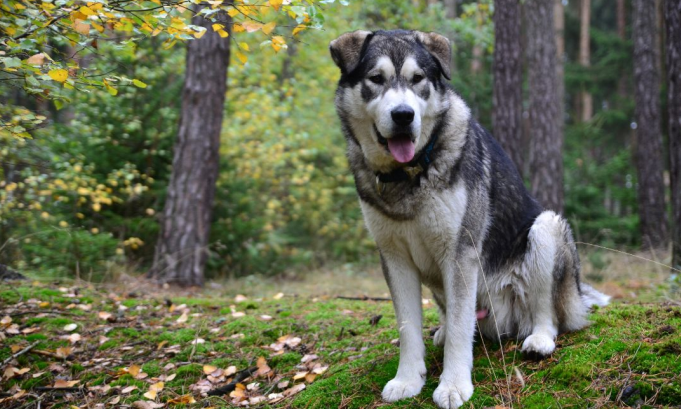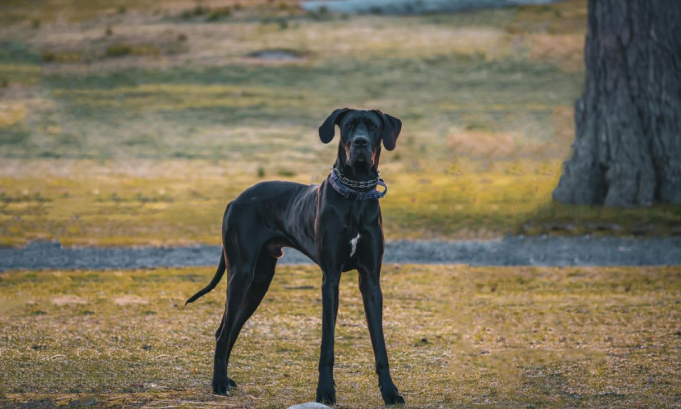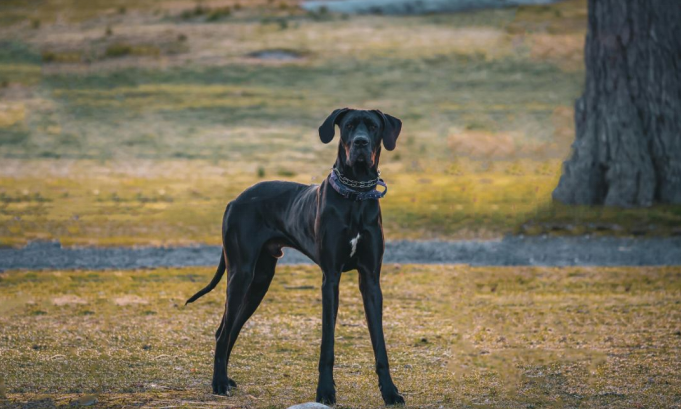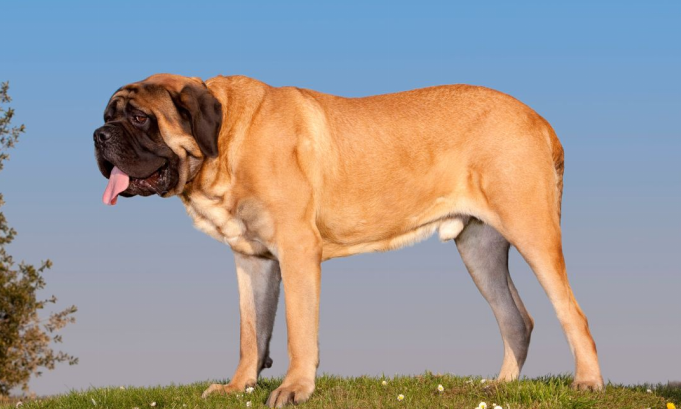The 5 Biggest Dog Breeds and How Much They Actually Cost to Own
Posted in CategoryAgriculture Discussion-
 Sdfsdf 15 hours ago
Sdfsdf 15 hours ago
Think giant dogs are just oversized puppies? Think again. That adorable Mastiff puppy costs more than your monthly car payment—and we're not talking about the purchase price. Between specialty food bills that rival your grocery budget and vet visits that require actual furniture removal, owning these gentle giants hits different.
Yet thousands of pet parents wouldn't trade their 150-pound lap dogs for anything. Why? Because beneath those massive frames lie some of the most loyal, protective, and surprisingly gentle companions you'll ever meet.
So we’re covering the top 5 giant breeds and their hidden expenses nobody warns you about. Keep reading if you're serious about bringing home a gentle giant. We're about to show you exactly what you're signing up for—financially and physically.
Great Dane — The Apollo of Dogs

Meet the breed that makes other large dogs look like toys. Great Danes tower at 28-32 inches tall and weigh between 110-175 pounds, yet somehow still believe they're lap dogs. These gentle giants combine elegance with power in a way that turns heads at every dog park.
Size and Physical Impact
Your Great Dane will physically change your living space. We're talking about dogs that can rest their heads on your kitchen counter without jumping.
Adult measurements:
● Males: 30-32 inches, 140-175 lbs
● Females: 28-30 inches, 110-140 lbs
● Standing height on hind legs: Up to 7 feet
Pro tip? Get used to eating at the table. Counter surfing becomes an art form when your dog's nose naturally reaches dinner plates.
The Real Cost Breakdown
Brace yourself—Great Danes burn through your budget faster than they grow (which is fast).
Expense Category
Monthly Cost
Annual Cost
Premium food
$100-150
$1,200-1,800
Routine vet care
$50-75
$600-900
Preventive meds
$40-60
$480-720
Pet insurance
$70-120
$840-1,440
Total
$260-405
$3,120-4,860
Hidden Expenses That Hit Hard
Beyond the basics, these costs catch new owners off guard:
● Orthopedic beds: $200-400 (replaced yearly)
● XL everything: Crates ($300+), car barriers ($150+), elevated feeders ($80+)
● Bloat surgery fund: $1,500-7,500 emergency reserve
● Joint supplements: $50 monthly after age 2
● Professional grooming: $80-120 per session
Great Danes typically live 7-10 years, making each year precious. Their shorter lifespan means higher annual medical costs as preventive care becomes critical. Smart owners budget $5,000 annually after accounting for unexpected vet visits and replacing destroyed furniture (yes, their tails are weapons).
English Mastiff — The Heavyweight Champion

If Great Danes are tall, English Mastiffs are massive. These dogs don't just enter rooms—they occupy them. Weighing up to 230 pounds, they're literally heavier than most adult humans. Yet these colossal canines move through life with surprising grace and an almost zen-like calm.
Breaking Down the Bulk
English Mastiffs grow into small bears, and your house better be ready for it.
Size specifications:
● Males: 30+ inches, 160-230 lbs
● Females: 27.5+ inches, 120-170 lbs
● Head circumference: Often exceeds 30 inches
● Daily food intake: 6-10 cups
That last point? Yeah, you'll become best friends with the pet store delivery driver.
Monthly Financial Reality Check
Mastiffs eat like athletes and require veterinary care that matches their size.
Expense Category
Monthly Cost
Annual Cost
Quality dog food
$120-180
$1,440-2,160
Vet checkups
$60-85
$720-1,020
Flea/tick/heartworm
$50-70
$600-840
Pet insurance
$90-150
$1,080-1,800
Total
$320-485
$3,840-5,820
Unexpected Costs You Can't Ignore
Beyond regular expenses, Mastiff ownership brings unique financial surprises.
The drool factor alone costs money:
● Waterproof couch covers: $100-200
● Extra towels for drool management: $50
● Professional carpet cleaning: $200 quarterly
Size-specific expenses:
● XXL orthopedic beds: $250-500 (need 2-3 around the house)
● Vehicle modifications: $300-800 for proper restraints
● Reinforced leashes/collars: $100+ per set
● Anesthesia surcharge at vets: 25-40% extra
Hip dysplasia affects many Mastiffs, with surgery running $4,000-6,000 per hip. Their 6-10 year lifespan means every health decision carries weight—literally and financially. Budget $6,000-8,000 yearly, once you factor in emergencies, with costs escalating after age 5.
Saint Bernard — The Gentle Mountain Dog

Saint Bernards bring the Swiss Alps to your living room—complete with the shedding snowstorm. These 140-180 pound teddy bears combine rescue dog heritage with family-friendly temperament, creating companions that are equal parts protective and patient. Just prepare for the fur. So much fur.
Physical Presence and Space Requirements
Your Saint Bernard needs room to stretch, and we mean serious room.
Adult specifications:
● Males: 28-30 inches, 140-180 lbs
● Females: 26-28 inches, 120-140 lbs
● Coat types: Short-haired or long-haired (both shed year-round)
● Drool level: Extreme (keep towels everywhere)
These dogs overheat easily. Air conditioning becomes non-negotiable in warm climates, adding $50-100 to monthly utility bills during summer.
True Cost of Saint Bernard Ownership
The Swiss mountain dog lifestyle doesn't come cheap.
Expense Category
Monthly Cost
Annual Cost
High-quality food
$110-160
$1,320-1,920
Regular vet care
$55-80
$660-960
Preventive medications
$45-65
$540-780
Pet insurance
$80-140
$960-1,680
Professional grooming
$100-150
$1,200-1,800
Total
$390-595
$4,680-7,140
Budget-Busting Surprises
Saint Bernard ownership includes expenses that blindside unprepared owners.
Grooming and maintenance madness:
● Professional de-shedding tools: $150-300
● Monthly grooming (non-negotiable): $100-150
● Vacuum cleaner replacement: $400-600 annually
● Lint roller budget: $20 monthly (seriously)
Health and comfort costs:
● Cooling mats/vests: $100-200
● Eye and skin care products: $40 monthly
● Joint supplements start early: $60 monthly from age 2
● Bloat prevention slow-feeders: $50-80
Saint Bernards usually get 8–10 years, and plenty deal with entropion — eyelid surgery runs $1,500–3,000 per eye. After six, heart problems and bone cancer start showing up more often, so yeah, full-coverage insurance earns its keep. Yearly costs? Easily $7,000–9,000 once you add in the home repairs from tails that swing like battering rams.
Newfoundland — The Swimming Bear-Dog